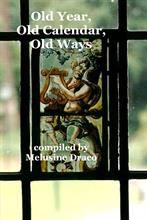
JULY was [OE] Æftera Līþa ‘After Midsummer’ or ‘Second Summer’. [OHG] Hewi-mānod ‘hay(making) month. In some years a “leap month” was added to the calendar at the height of the summer, which was Thriliða, or the ‘third-mild.’ In the 14th century misericord calendar, it was shown as the time for baking the loaves for Lammas from the first flour to celebrate the start of the harvest. The tree representing July is the Birch, known as the ‘Lady of the Woods’ and used in the making of the besom.
Birch Magic: At night, when its silvery bark glimmers in the moonlight, the birch creates a majestic yet ethereal image. The tree’s loose, paper-like bark was held sacred by early man and excavations of Neolithic and Mesolithic grave-mounds reveal that rolls of birch bark were interred alongside the corpse, although their exact significance remains a mystery.
2nd The annual Boston Charter Fair has been held in the town since at least 1125 and has been a part of local life since the 12th century when Henry I granted the charter to the people of Boston. Today: If you live in the area take the family out for the day and enjoy this link with the past.
Weather-lore: ‘Dog Days (3rd) bright and clear, indicate a happy year.’
2nd Feast Day of St Swithun of Winchester. St Cewydd is the Welsh ‘rain saint’, like Medard in France, Gildas in Brittany and St Swithun in England he was associated with a pre-Christian rain superstition in July, when, if it rained on that day, it was believed rain would continue for 40 days. The feast day was originally 2nd July (later moved to 15th after the calendar change). Today: Why not visit Winchester and acquaint yourself with this ancient capital.
3rd Dog Days. The Romans called the six to eight hottest weeks of the summer caniculárȇs diȇs because the dog-star, Sirius, rising with the sun added to its heat; the dog-days bore the combined heat of the dog-star and the sun between 3rd July and 11th August. Today: In reality the British summer has often been described as three fine days and a thunderstorm!
4th The traditional festival of the Whalton Baal [Northumberland] that was held each year on ‘Old Midsummer’s Eve’, the alteration of the calendar in 1752 resulted in the date being moved by eleven days but country folk round about, however, went on celebrating the festival at the old time. Today: Hold a mini-fire festival of your own on Old Midsummer’s Eve (5th) to celebrate the Old Ways.
6th Old Midsummer’s Day: Time of Grace. The lawful season for venery, which began at Midsummer and lasted until Holyrood Day. The fox and wolf might be hunted from the Nativity to the Annunciation; the roebuck from Easter to Michaelmas; the roe from Michaelmas to Candlemas; the hare from Michaelmas to Midsummer; and the boar from the Nativity to the Purification.
7th Nones Caprotinae was generally known as a Roman picnic day, when celebrations dedicated to the goddess Juno Caprotina were held al fresco in parks or outside the city in the fields. Tents and temporary shelters made from branches would be set up so that the revels could continue all night and into the following day. Today: An excellent day for a picnic.
14th Mercanus began six days of markets and fairs when Rome would have been full of colour. Today: Make a point of visiting a local market and drink in the atmosphere.
Weather-lore: ‘St Swithin’s Day (15th July), if thou dost rain, for forty days it will remain’.
19th Honiton Fair in Devon goes back to the 13th century and is a three-day event held on the first Tuesday after the 19th July. Today: Make an effort to visit this famous fair.
23th Neptunalia: Honouring the Roman Neptune on this day would encourage ample rainfall for the crops and prevent drought. Neptune was an old Italian sea god and, as his festival falls at the height of summer, booths of foliage were erected to protect worshippers from the Sun. Today: A perfect opportunity for a picnic by the sea.
25th Furrinalia was a Roman celebration of feasting and drinking in honour of an early-Italian earth-goddess. Roman scholar and writer, Varro noted that the festival was a public holiday (feriae publicae dies). Both the festival and the goddess had become obscure even to the Romans of the Late Republic (mid-1st century BC) and that few people in his day even knew her name. Today: A perfect opportunity for a family summer picnic.
28th The Celtic festival of Domhnach Crom Dubh was held on the last Sunday of July. Known also as Crom Cruach or Cenn Cruach, at this time of year the ‘Dark, Crooked One’ rises from the underworld to abduct Eithne, the corn maiden, and carry her away on his stooped back. See 7th August. Today: Pay homage to this ancient Lord or the Harvest and God of the Underworld by pouring a libation at the edge of the cornfield.
Old Year, Old Calendar, Old Ways, compiled by Melusine Draco is published by Ignotus Press UK ISBN 978 1 78876 205 2 in paperback and e-book format. Available direct fro the printer at a discounted price.
https://www.feedaread.com/books/Old-Year-Old-Calendar-Old-Ways-9781788762052.aspx





 RSS Feed
RSS Feed